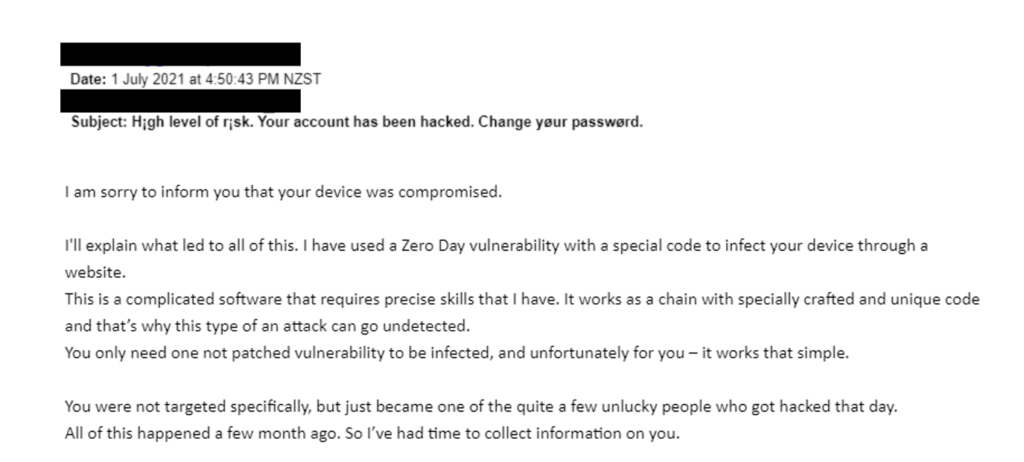As the everyday technologies we use to improve our lives become more sophisticated, so do the online threats we face.
Scams and viruses come in many forms and are becoming increasingly difficult to identify, including spam.
While it may initially appear to be more of a nuisance than malicious, some spam can be harmful to the receiver, including one type recently doing the rounds with a few schools and kura in Aotearoa.
Targeted at decision makers within schools, this spam tries to entice the recipient to purchase online security services off the spammer.
While it may seem like your average bit of spam, this one goes beyond a simple sales pitch. The spammer informs the targeted schools that their systems/accounts have been compromised, and that the two should work together urgently to fix the problem.
One such example below states that the school account has been hacked and made available on the dark web.
You can help prevent spammers attempting to do the same with your school by:
- Never posting your email address publicly/online. Doing so will give everyone access to it and increase the chances that a spammer will target your address.
- Putting your spam filters and antivirus software in place.
- Educating all your network users on email security, including basic email spam. CERT NZ is a great place to start.
If a suspicious looking email finds its way into your inbox, you should:
Check if your school has had any past contact with the company/sender. Nothing? It’s highly likely the email is targeted spam.
Not reply to the email.
Think it’s spam?
Add the sender to your block list. They won’t be able to contact you on that email again.
Report it to the DIA here.
Remember – if you’re not sure about something, get in touch with your IT contact. Our Helpdesk is also here to help on 0800 LEARNING.


